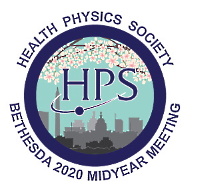WPM-A
Risk Analysis
Room: Grand Ballroom A14:00 - 15:00 |
| Chair(s): Jessica Wieder, Betsy Wier
|
|
WPM-A.1 14:00 Let’s Talk about Risk and Reasonableness. Wieder Jessica S.* wieder.jessica@epa.gov
The different perspectives on reasonableness and tolerability across the national and international radiation protection community were highlighted in a special session at the 2019 HPS Annual meeting. Following last year’s session, this facilitated discussion is one opportunity for you to weigh-in on what do “reasonableness” and “tolerability” mean to you personally and in your field of expertise. Together we will discuss questions like what is the link between tolerable and reasonable?; What criteria should we consider when determining what is reasonable?; Are the same criteria applicable for what is reasonable in all exposure situations?; Is what is tolerable in an medical scenario different from what is tolerable in an environmental scenario?; What does “as low as reasonably achievable" mean in your field of work? Your feedback will be sent to ICRP Task Group 114 for their consideration as they work toward setting a basis for future reasonableness and tolerability considerations in radiation protection.
|
WPM-A.2 14:15 Perception of Risk from Abandoned Uranium Mines in the Sweetwater Chapter of the Navajo Nation . Wier Betsy A*, Colorado State University; Charley Phillida A, Colorado State University; Johnson Thomas E, Colorado State University; John Gilbert, Colorado State University betsy.wier@colostate.edu
Uranium mining took place on Navajo lands from 1940-1969 under the Manhattan Engineering District. Legacy mines are a concern for Navajo communities despite EPA and company mitigation and remediation. The Sweetwater Chapter has multiple abandoned uranium mines near homes, unregulated water sources, livestock grazing, and places of cultural significance. Past studies have focused on sampling the environment and not the social-ecological and psychosocial impact – the whole system perspective. Measuring uranium and radiation levels only does not support the affected community to reduce their perceived risks. Preliminary data from community-engaged research in the Sweetwater Chapter gives insight into perceived risks from individual, family and community perspectives. This research uses qualitative methods to identify the issues of greatest concern and document future pathways for the community beyond the legacy of uranium mining. The goal of this research is to use community engagement techniques and qualitative research methods to help the Sweetwater Chapter understand the distress associated with legacy uranium mining and provide accurate risk analysis towards informed decision-making for a sustainable future.
|
WPM-A.3 14:30 The Process for Fostering Community Engagement in Situations of Actual and Perceived Risks from Uranium Mining . Wier Betsy A*, Colorado State University; Charley Phillida A, Colorado State University betsy.wier@colostate.edu
Communicating risks and hazards at the community level can be challenging and outside the scope and expertise of technical assessments and site cleanup activities. Communities that have experienced protracted environmental disasters can express distress and uncertainty about their futures. While technical experts do provide informational sessions and question & answer opportunities, often community members lack the confidence to ask the questions that matter most to their daily lives. This sense of overwhelm can influence the level of participation from communities in the formal processes and decisions that affect the future planning for their communities. There are methods and techniques that can be utilized to foster community engagement and dialogue to increase knowledge, understanding and confidence concerning technical subject matter. The methods and techniques piloted in the Sweetwater Chapter of the Navajo Nation, a legacy uranium mining community, are presented as best practices, lessons learned and practical recommendations for field situations. The process of creating a cultural map using ArcGIS Story Map software and examples of the resulting tool are presented as one method for creating a shared understanding at the community level. The goal of this research is to establish an evidence based process for working with communities in situations of legacy environmental disaster and cleanup.
|
WPM-A.4 14:45 A Pilot Study to Examine Uranium and Arsenic in Livestock near Abandoned Uranium Mines in the Sweetwater Chapter of the Navajo Nation. Charley Phillida A*, Colorado State University; Wier Betsy A, Colorado State University; Johnson Thomas E, Colorado State University; John Gilbert, Colorado State University Phillida.Charley@colostate.edu
Multiple abandoned uranium mines (AUMs) are located in the Sweetwater Chapter of the Navajo Nation and undergoing several stages of clean-up. Some AUMs are near unregulated water sources; which, were found to have uranium or arsenic above drinking water limits according to several tests over the last decade. Many of these water sources are utilized for livestock (cows, horses, goats, and sheep) and are unsafe for human consumption. There is limited information concerning the chronic intake of arsenic and/or uranium on livestock. A previous study demonstrated sheep retain uranium in the liver and kidney. The lack of knowledge on long term uranium and arsenic effects on livestock, as well as the concentration in livestock, is a major public health concern. Through interactions by science communications with the Sweetwater Chapter community members raised concerns about the impact of livestock ingestion of uranium and arsenic in a free-range grazing environment. Navajo people will eat every part of livestock and may ultimately concentrate both elements. The purpose of this study is to understand the impact on livestock health of these contaminated unregulated water sources.
|
 2020 Health Physics Society Midyear Meeting & Exhibition
2020 Health Physics Society Midyear Meeting & Exhibition